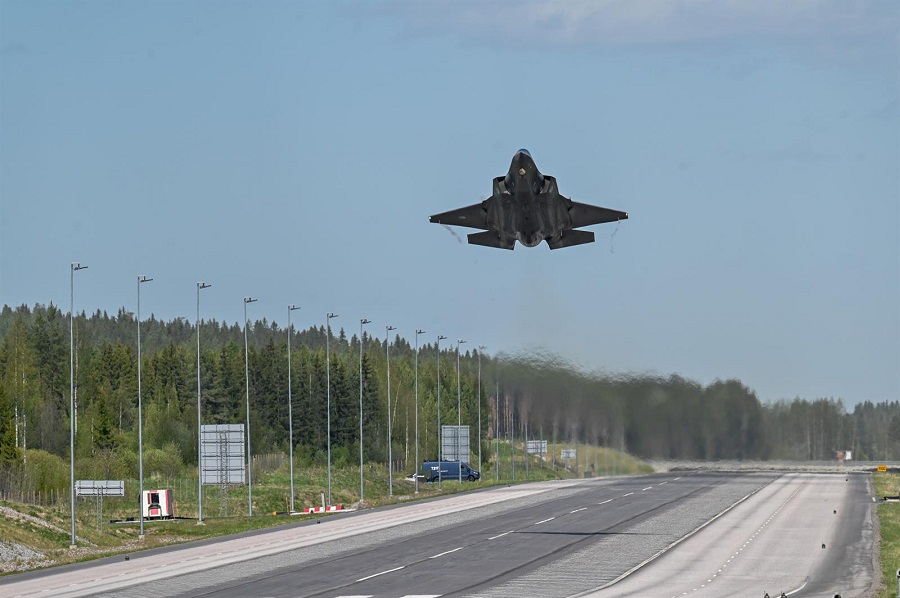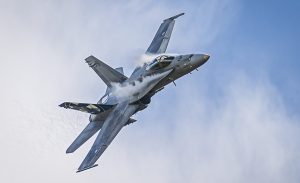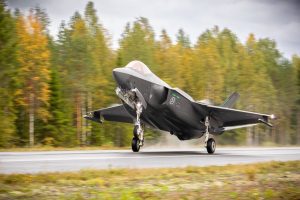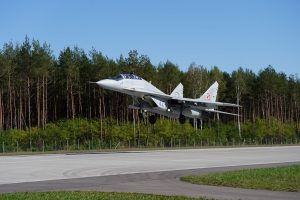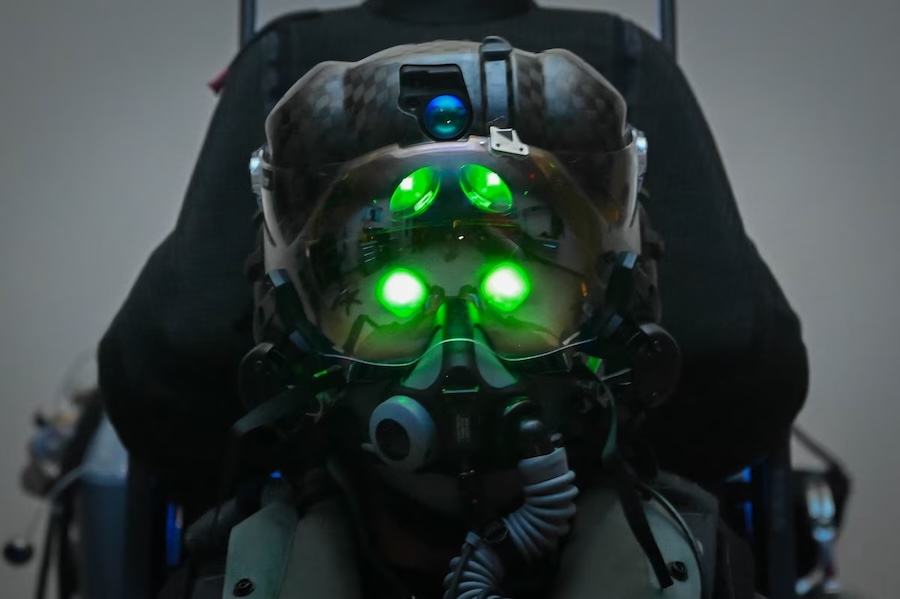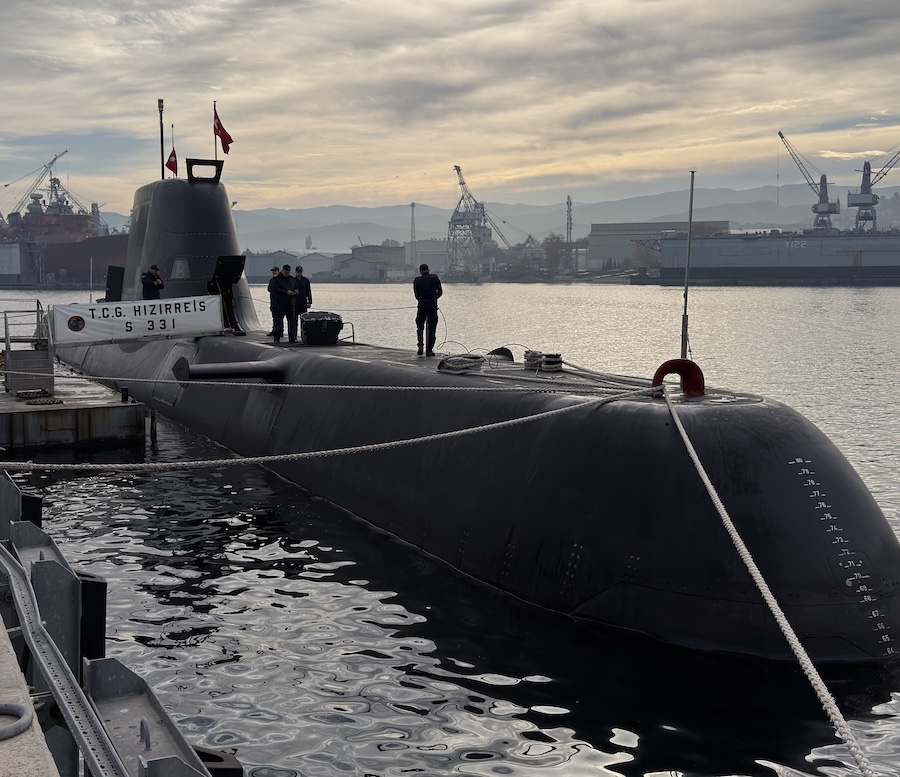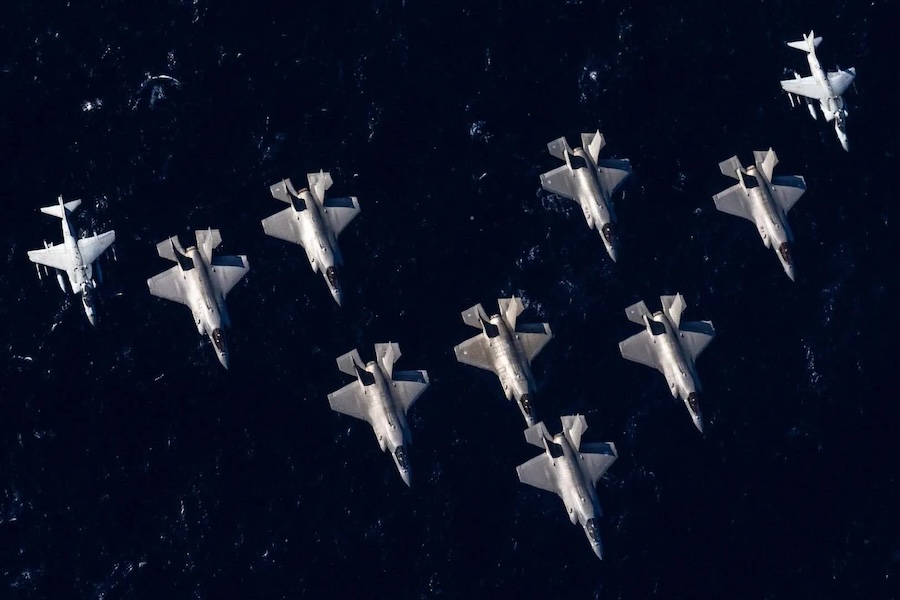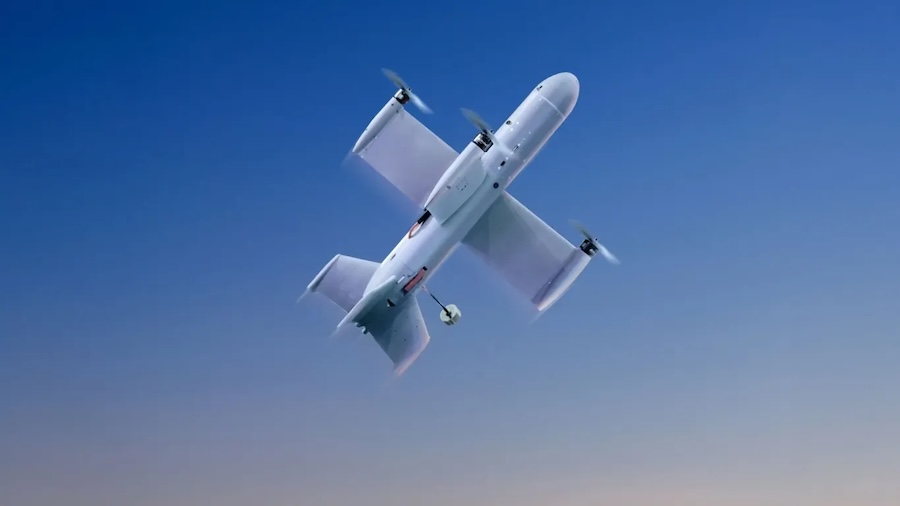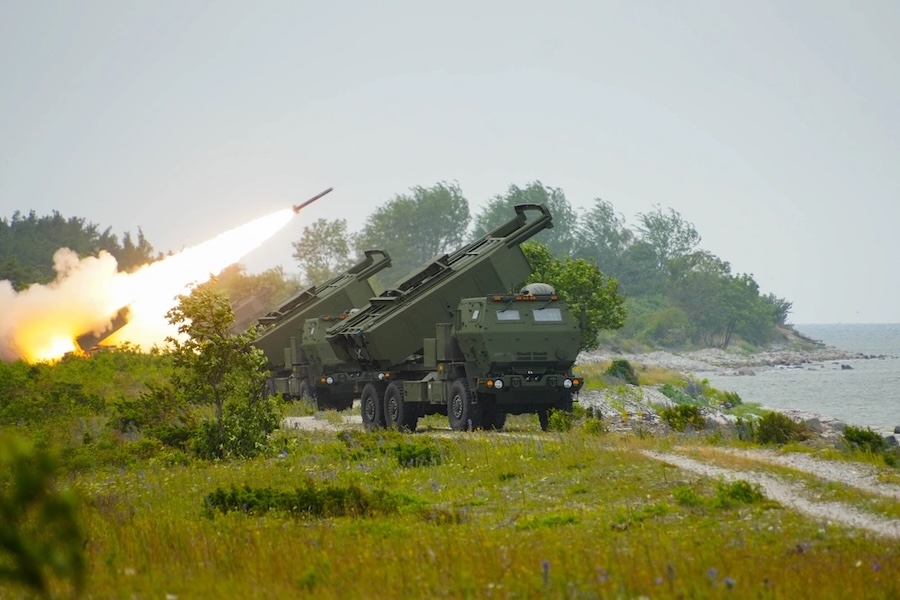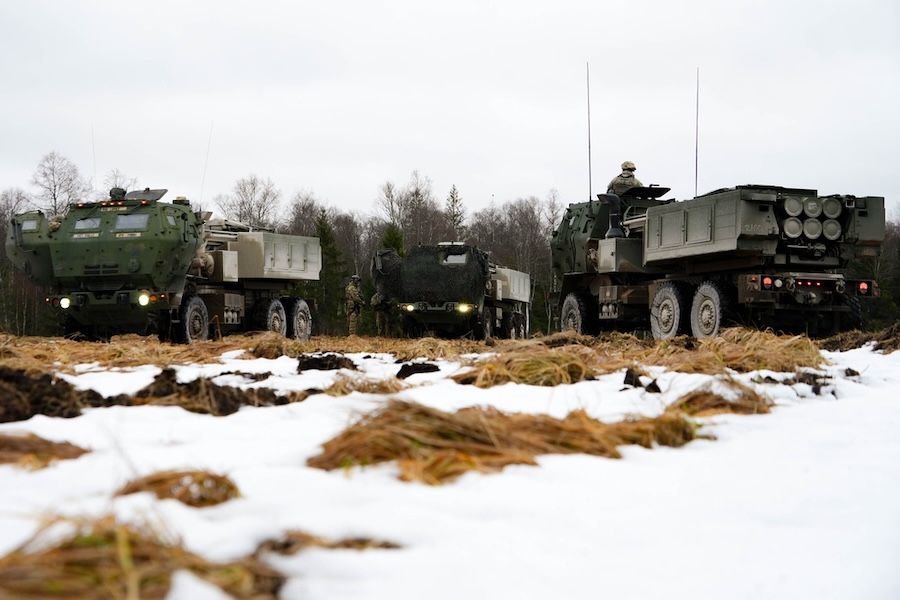From 26 to 30 May, Finland hosted its biannual base operations exercise, known as JPH, which involved over 20 Allied aircraft and nearly 2,000 conscripts, reservists, and active-duty personnel. For the first time, the exercise included the Baana highway strip drill, with Finnish F/A-18 Hornets, Hawk trainers, and other aircraft operating from a section of Highway 4 near Tikkakoski Air Base in Jyväskylä.
The Royal Netherlands Air Force participated in Baana for the first time, conducting touch-and-go landings and take-offs with F-35A Lightning II aircraft. These Dutch jets also integrated with Finnish F/A-18s, strengthening interoperability between Allied 4th and 5th generation fighter aircraft.
This training supports Finland’s mobile battle concept, which ensures continued air operations from remote locations if primary runways are unavailable. Highway strip usage has been part of Finnish military training since the 1960s, offering key contributions to NATO’s ACE focus.
“Readiness to operate out of a dispersed base network is part of the Finnish Air Force’s mobile battle concept, and operating at highway strips is part of the flight training for all Finnish fighter pilots,” said Colonel Tomi Böhm, Assistant Chief of Staff, Finnish Air Force.
In Sweden, C-130 Hercules aircraft from Sweden, Norway, and the Germany-France Binational Air Transport Squadron (BATS) conducted short strip landings on closed public roads. These exercises trained aircrews in launching and recovering aircraft from temporary, austere runways.
NATO emphasised that these activities reflect the Alliance’s commitment to ACE, which promotes rapid deployment and complicates adversary targeting while enhancing endurance. By using unexpected locations and strengthening regional cooperation, Allied forces improve deterrence and operational readiness.
“ACE is a key capability, which we would employ to defend Europe in any Article 5 confrontation,” said Air Marshal Johnny Stringer, Deputy Commander of NATO Allied Air Command. “ACE brings together Air Forces from across the Alliance and has them operate from many different air bases, ensuring the credibility and capabilities that underpin our deterrence posture.”
The Finnish and Swedish drills underline NATO’s adaptability and collective readiness in addressing emerging security challenges.



